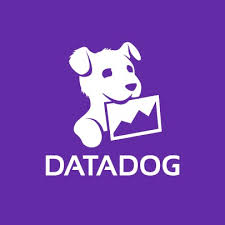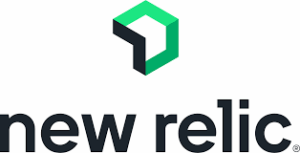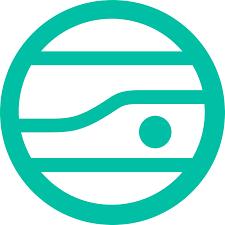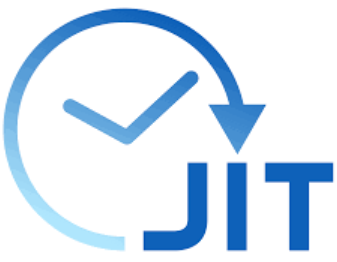Keeping up with compliance in DevOps can feel like juggling flaming swords while riding a unicycle. There’s a mix of regulations, audits, and internal standards, and if you’re manually checking every box, you’re bound to burn out. Luckily, a new generation of tools is here to take the weight off your shoulders – automating checks, monitoring changes, and keeping your deployments audit-ready without slowing you down. In this guide, we’ll break down the best DevOps compliance tools that actually make your life easier, rather than just adding more dashboards to stare at.

1. AppFirst
AppFirst manages the infrastructure so teams can focus entirely on their applications. Instead of spending time writing Terraform, CDK, or YAML files, developers define what the app needs – CPU, databases, networking, and container images – and AppFirst handles the rest automatically. This approach maintains compliance and security standards without manual configuration or reviewing every infrastructure pull request. Changes are logged and auditable across AWS, Azure, and GCP, providing a clear picture of cost, usage, and compliance status by app and environment.
Using AppFirst enables faster onboarding of engineers, as they do not need to learn internal frameworks or complex cloud configurations. Whether deploying via SaaS or self-hosted, consistent security practices are maintained, activity is monitored, and issues are alerted on without requiring a dedicated infrastructure team. The infrastructure adapts to app requirements, ensuring that switching providers or scaling up does not slow down the development process.
Faits marquants :
- Automatic provisioning of compliant infrastructure across major cloud providers
- Built-in logging, monitoring, and alerting
- Centralized auditing of infrastructure changes
- Cost visibility by app and environment
- SaaS or self-hosted deployment options
- No dedicated infrastructure team required
Pour qui c'est le mieux :
- Teams focused on shipping applications rather than managing infrastructure
- Developers who want to skip Terraform, YAML, or cloud setup
- Companies standardizing security and compliance across teams
- Organizations that need audit-ready, cost-transparent infrastructure
Informations de contact :
- Site web : www.appfirst.dev

2. Drata
Drata provides a platform that centralizes governance, risk, compliance, and assurance in one place. The platform automates control monitoring, evidence collection, and mapping across multiple frameworks, reducing the time teams spend on manual compliance tasks. It also tracks internal, vendor, and external risks, giving a clearer picture of overall compliance posture. By integrating workflows and deadlines, it helps maintain accountability and ensures that compliance activities are consistent across the organization.
The platform also uses AI-driven processes to streamline questionnaires and accelerate security reviews, making it easier to maintain ongoing audit readiness. Teams can customize controls and workflows, monitor real-time compliance status, and respond to issues promptly. This approach allows organizations to manage risk more proactively rather than reacting to audits or incidents after they occur.
Faits marquants :
- Automated control monitoring and evidence collection
- AI-driven workflows for questionnaires and risk management
- Centralized tracking of internal, vendor, and external risks
- Customizable controls and compliance workflows
- Continuous multi-framework readiness and reporting
Pour qui c'est le mieux :
- Organizations managing multiple compliance frameworks
- Security and compliance teams handling audits
- DevOps teams integrating compliance into daily workflows
- Companies seeking proactive visibility into risk and compliance
Informations de contact :
- Website: drata.com
- E-mail: support@drata.com
- Twitter: x.com/dratahq
- LinkedIn: www.linkedin.com/company/drata

3. Open Policy Agent
Open Policy Agent is an open-source policy engine that allows teams to define and enforce compliance policies across cloud infrastructure and applications. It works by expressing rules as code, making it easier to integrate compliance checks into DevOps pipelines. Teams can apply these policies to microservices, Kubernetes clusters, APIs, or CI/CD workflows, ensuring that security and governance requirements are continuously validated.
OPA’s main advantage is flexibility. Instead of being tied to a specific platform, it integrates with various environments and tools. This gives organizations a consistent way to evaluate policies across their entire stack. It helps reduce manual reviews, maintain uniform standards, and provide visibility into compliance decisions without disrupting delivery speed.
Faits marquants :
- Policy-as-code framework using the Rego language
- Works across multiple environments, including Kubernetes and microservices
- Integrates with CI/CD pipelines for automated checks
- Open-source and platform-agnostic
- Offers centralized policy evaluation and logging
Pour qui c'est le mieux :
- Teams building custom compliance automation within DevOps pipelines
- Organizations managing complex, multi-cloud environments
- Engineers looking for flexible, code-based policy enforcement
- Companies adopting policy-as-code practices
Informations de contact :
- Website: www.openpolicyagent.org

4. ControlMonkey
ControlMonkey offers infrastructure-as-code (IaC) automation tools that help DevOps teams maintain continuous compliance with regulations such as the EU NIS2 Directive. The platform focuses on managing cloud infrastructure through policy-based governance, visibility, and change control. It allows teams to automatically validate configurations, detect drift between code and deployed environments, and maintain a record of every infrastructure change. This structured approach ensures traceability and supports rapid incident response without adding manual overhead.
By combining IaC automation with compliance frameworks, ControlMonkey helps organizations integrate regulatory requirements directly into their DevOps pipelines. Teams can roll back to safe configurations after incidents, enforce access controls, and maintain audit-ready environments through versioned infrastructure management. The result is a workflow where compliance becomes a built-in part of development and operations, rather than an afterthought handled during audits.
Faits marquants :
- Automates compliance tasks through IaC-based governance
- Detects and remediates configuration drift in cloud environments
- Enforces policy-as-code for secure infrastructure provisioning
- Provides rollback and recovery features for post-incident resilience
- Tracks and approves all infrastructure changes for audit readiness
Pour qui c'est le mieux :
- DevOps teams managing large cloud infrastructures under EU regulations
- Organizations preparing for NIS2 or similar cybersecurity frameworks
- Teams using Terraform or other IaC tools that require compliance alignment
- Companies seeking automated visibility and control across multi-cloud setups
Informations de contact :
- Website: controlmonkey.io
- LinkedIn: www.linkedin.com/company/controlmonkey

5. Datadog
Datadog provides a unified observability and security platform that helps DevOps teams keep their infrastructure compliant and secure across complex, distributed environments. The platform brings together monitoring, logging, and security insights, giving teams visibility into every layer of their systems – from cloud infrastructure and containers to applications and network activity. This level of integration makes it easier to spot compliance gaps, misconfigurations, and potential security risks before they turn into serious problems.
Their compliance features allow teams to continuously monitor their environments against established frameworks and internal policies. By automating checks for configuration drift, permission issues, and insecure dependencies, Datadog helps organizations maintain a consistent security posture without relying on slow, manual audits. It also consolidates evidence collection and audit reporting, reducing the friction between operations and compliance teams.
Faits marquants :
- Unified observability and security monitoring across infrastructure and applications
- Continuous compliance checks against frameworks and internal policies
- Automated detection of configuration drift and access violations
- Centralized audit logging and reporting for easier evidence management
- Broad integration ecosystem for cloud providers, CI/CD tools, and DevSecOps pipelines
Pour qui c'est le mieux :
- DevOps teams managing multi-cloud or hybrid environments
- Organizations that need to maintain continuous compliance visibility
- Teams seeking to unify monitoring, security, and audit processes in one platform
- Enterprises requiring detailed reporting and traceability across distributed systems
Informations de contact :
- Site web : www.datadoghq.com
- Courriel : info@datadoghq.com
- Twitter : x.com/datadoghq
- LinkedIn : www.linkedin.com/company/datadog
- Instagram : www.instagram.com/datadoghq
- Address: 620 8th Ave 45th Floor New York, NY 10018 USA
- Téléphone : 866 329-4466

6. New Relic
New Relic offers a platform built for full-stack observability, giving teams visibility into applications, infrastructure, logs, and network behavior all in one place. By pulling together telemetry data from multiple systems, they help organizations identify where potential compliance or security risks might be hiding. This level of insight allows DevOps and security teams to track configurations, permissions, and performance metrics without juggling multiple tools or dashboards.
For compliance-focused workflows, New Relic’s monitoring and logging capabilities make it easier to detect anomalies, audit system behavior, and maintain accountability across environments. They provide a way to visualize dependencies and trace how services interact, which helps teams confirm that data handling, access control, and operational processes stay within policy boundaries. Their support for open standards and wide integration range also means teams can keep compliance monitoring consistent across both legacy and cloud-native systems.
Faits marquants :
- Centralized observability across infrastructure, logs, and applications
- Real-time tracking of performance, dependencies, and system changes
- Supports compliance monitoring through data correlation and audit visibility
- Integrates with hundreds of tools and open telemetry standards
- Helps teams maintain control and transparency across hybrid and cloud setups
Pour qui c'est le mieux :
- DevOps teams needing full-stack visibility for compliance and security
- Organizations maintaining hybrid or multi-cloud environments
- Teams that want to consolidate monitoring and auditing into one platform
- Companies focused on proactive detection of configuration or access issues
Informations de contact :
- Site web : newrelic.com
- Facebook : www.facebook.com/NewRelic
- Twitter : x.com/newrelic
- LinkedIn : www.linkedin.com/company/new-relic-inc-
- Instagram : www.instagram.com/newrelic
- Address: 188 Spear St., Suite 1000 San Francisco, CA 94105, USA
- Phone: (415) 660-9701

7. Opsera
Opsera focuses on helping organizations bring structure and visibility to their DevOps and security processes. Their platform combines automation, compliance, and governance into one environment, allowing teams to see how their pipelines perform while staying aligned with internal and regulatory standards. Instead of juggling separate tools for security, quality, and compliance, Opsera brings them together to create a unified workflow that supports continuous monitoring and reporting.
The platform gives teams a way to track software delivery metrics alongside security and compliance indicators. By collecting data from multiple sources, it helps identify risks early, enforce policy checks, and maintain consistent practices across projects. This integrated approach allows DevOps teams to maintain speed and agility without losing control over compliance and governance standards.
Faits marquants :
- Unified DevSecOps platform for visibility, security, and governance
- Centralized dashboards showing key delivery and compliance metrics
- Early detection of vulnerabilities and misconfigurations
- Continuous compliance monitoring across the software lifecycle
- Supports integration with existing DevOps tools and workflows
Pour qui c'est le mieux :
- Teams managing complex DevOps environments needing stronger compliance oversight
- Organizations aiming to align development speed with governance standards
- Enterprises looking to centralize DevSecOps monitoring and policy enforcement
- Companies seeking better visibility across multiple tools and pipelines
Informations de contact :
- Website: opsera.ai
- Twitter: x.com/opseraio
- LinkedIn: www.linkedin.com/company/opsera

8. JupiterOne
JupiterOne focuses on automating compliance within DevOps pipelines through an approach known as DevOps Continuous Compliance Automation (DCCA). Their platform integrates compliance checks directly into development workflows, turning what used to be manual reviews into automated, real-time validation. By embedding policies and enforcement early in the software lifecycle, teams can maintain alignment with regulatory standards while keeping up with fast delivery schedules.
The system connects with existing DevOps tools, cloud services, and governance platforms to monitor compliance continuously. This setup helps organizations detect policy gaps early, track adherence to frameworks, and reduce the risk of configuration drift or missed requirements. The goal is to make compliance an ongoing part of the development process rather than a separate, after-the-fact step.
Faits marquants :
- Continuous compliance automation integrated into DevOps workflows
- Real-time monitoring and enforcement of policies
- Compatibility with leading regulatory and security frameworks
- Automatic reporting and visibility across tools and environments
- Reduces manual audit effort through consistent automation
Pour qui c'est le mieux :
- Teams looking to automate compliance and security checks within CI/CD pipelines
- Organizations operating under strict regulatory frameworks
- Enterprises seeking continuous visibility into compliance posture
- DevOps teams aiming to balance speed with governance consistency
Informations de contact :
- Website: www.jupiterone.com
- E-mail: support@jupiterone.com
- Twitter: x.com/jupiterone
- LinkedIn: www.linkedin.com/company/jupiterone
- Address: 600 Park Offices Drive Suite 250 Durham, NC 27709

9. Jit
Jit focuses on automating security and compliance work within development pipelines through AI-driven agents. Instead of just identifying vulnerabilities, their platform helps teams handle the entire process – scanning, triage, remediation, and compliance analysis — without adding manual overhead. The agents work across a wide range of systems, from source code and containers to cloud environments, using both Jit’s own scanners and integrations with other security tools.
The approach centers on keeping product security in sync with DevOps speed. By embedding security and compliance checks into the development workflow, Jit helps teams reduce backlogs, close vulnerability gaps, and maintain alignment with internal and external requirements. The goal isn’t to replace engineers but to take over the repetitive parts of application security so teams can stay focused on delivery while staying compliant.
Faits marquants :
- AI-powered agents automate vulnerability detection, triage, and remediation
- Full-stack scanning across code, infrastructure, and cloud environments
- Compliance gap analysis and policy-based enforcement
- Supports continuous security within existing CI/CD pipelines
Pour qui c'est le mieux :
- DevOps and security teams managing large or fast-moving codebases
- Organizations needing ongoing compliance verification in development cycles
- Teams looking to consolidate multiple security tools under one workflow
- Companies aiming to reduce manual effort in vulnerability management and reporting
Informations de contact :
- Website: www.jit.io
- E-mail: contact@jit.io
- Facebook: www.facebook.com/thejitcompany
- Twitter: x.com/jit_io
- LinkedIn: www.linkedin.com/company/jit
- Address: 100 Summer Street Boston, MA, 02110 USA

10. Semgrep
Semgrep focuses on helping teams identify and fix security risks directly within their codebase, keeping compliance aligned with development speed. It combines static application security testing, open source dependency checks, and secret detection into a single workflow that integrates naturally with developers’ existing tools. Their system uses AI-assisted noise filtering to reduce the number of false positives, which is often a major frustration with traditional scanning tools. Rather than overwhelming teams with alerts, it tries to highlight only what’s actually relevant and actionable.
Beyond detection, Semgrep’s platform supports automated policy enforcement and remediation guidance. It adapts to different team sizes and setups, working across various languages, frameworks, and CI/CD environments. The goal is to make continuous compliance easier to maintain without slowing down engineering work. Its transparency and flexibility also make it suitable for organizations that prefer to customize their own security and compliance rules.
Faits marquants :
- Static code analysis, dependency, and secrets scanning in one platform
- AI-assisted filtering to reduce false positives and alert fatigue
- Custom rule creation for organization-specific compliance needs
- Integrations with developer workflows and CI/CD tools
- Transparent rule syntax for easier troubleshooting and adaptation
Pour qui c'est le mieux :
- Development and security teams seeking to automate compliance checks in code
- Organizations looking for a flexible, low-friction AppSec setup
- Teams wanting customizable and transparent scanning without heavy configuration
- Companies focusing on shifting security and compliance earlier in the development process
Informations de contact :
- Website: semgrep.dev
- Twitter: x.com/semgrep
- LinkedIn: www.linkedin.com/company/semgrep

11. ZAP by Checkmarx
ZAP (short for Zed Attack Proxy) is one of those open-source tools that’s been around forever – and for good reason. It’s community-driven, free to use, and seriously powerful when it comes to finding vulnerabilities in web applications. Whether you’re testing something mid-development or doing a quick check before pushing to production, ZAP helps you spot weak spots early.
Because it’s open source, you can tweak it however you like – automate scans, run it in CI/CD, or plug it into your existing DevOps setup without being tied to any vendor’s rules. It takes a bit of setup at first, but once it’s running, it’s flexible, transparent, and completely under your control. When it comes to compliance, ZAP helps teams stay aligned with standards like the OWASP Top 10 by catching common web security issues before they become real problems. You can run it manually for hands-on testing or automate it to run behind the scenes. Plus, there’s a big community marketplace full of add-ons to expand what it can do.
Faits marquants :
- Open-source web application security testing tool
- Supports both manual and automated scanning approaches
- Can be integrated into CI/CD pipelines for continuous testing
- Extensible through a large marketplace of community add-ons
- Helps address common compliance standards such as OWASP Top 10
Pour qui c'est le mieux :
- Teams looking for an open-source alternative for web app security and compliance
- DevOps engineers wanting to integrate security checks into automated workflows
- Organizations that prefer transparency and customization over prepackaged solutions
- Security professionals performing both manual and automated vulnerability testing
Informations de contact :
- Website: www.zaproxy.org
- Twitter: x.com/zaproxy
Conclusion
Keeping up with compliance in DevOps isn’t really about checking boxes anymore. It’s about making sure your systems, code, and workflows stay secure without slowing everything else down. The tools that stand out are the ones that fit naturally into the way teams already work – quietly running in the background, flagging what matters, and helping developers fix issues before they grow into something serious.
Whether it’s automated vulnerability scanning, policy enforcement, or real-time visibility across cloud setups, each platform brings a slightly different piece of the puzzle. What matters most is finding one that actually supports how your team ships software day to day. With the right setup, compliance becomes less of a burden and more of a built-in habit – something that just happens as part of good engineering practice.


